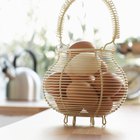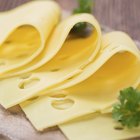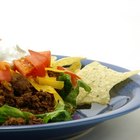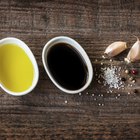
Many popular recipes, from angel's food cake to the iconic lemon meringue pie, rely on whipped egg whites either for their leavening power or their visual appeal. Whipping egg whites is a simple process, but it does take a certain amount of time and skill. Many cookbooks advise adding a pinch of cream of tartar to produce lighter, fluffier egg whites, but some substitutes work just as well.
Cream of Tartar
Even if you don't keep cream of tartar in your pantry, you've probably seen it in the baking supplies section of your local supermarket. It's a fine white powder, usually sold in small jars or cans. Cream of tartar is a by-product of wine production, an impurity that crystallizes out of grape juice during fermentation. These crystals are harvested by the wine makers, then refined and ground to a powdery texture for sale. There are relatively few dry, flavorless acidic ingredients bakers can use, which makes cream of tartar a handy ingredient for many purposes in the kitchen.
Egg Whites and Acidity
One of those purposes of cream of tartar is to help egg whites form a light, stable foam. Whether you whip egg whites by hand with a whisk or in the bowl of a powerful stand mixer, the effect is the same. Every time the wires whip through the egg whites, they physically shear the egg whites' proteins and leave behind bubbles of air. The proteins create new bonds, encircling the air bubbles. As the whisk continues to whip the eggs, the bubbles become finer and finer. Acidity speeds the process by weakening the bonds that hold the egg proteins in their original, tightly-packed arrangement.
Acidic Substitutes
Many other acidic ingredients can serve the same purpose of helping loosen or "denature" the proteins in the egg whites. If you don't have cream of tartar on hand, you can substitute the same amount of lemon juice or plain white vinegar. In large quantities they can lend a noticeable flavor to your egg whites, but most recipes call for only a fraction of a spoonful. Alternatively, you can use the crystalline powder sold in supermarket produce sections to prevent cut fruit from browning. Those powders consist of ascorbic acid or citric acid, and will also help the egg whites whip up to a high, snowy foam.
Other Tips
Adding an acidic ingredient can make whipping egg whites quicker and easier, but most dedicated bakers know an additional trick or two that can help give a better result. For one thing, room temperature egg whites whip better than chilled whites. Let your eggs sit out for a half hour before whipping them, or separate the whites into a pre-warmed glass or stoneware mixing bowl. Some manufacturers produce copper mixing bowls specifically for egg whites. Those work on a different principle, altering the electrical polarity of the protein molecules to produce a light, stable foam.
Related Articles

A Substitute for Cream of Tartar in a ...

Adding Cream of Tartar to Macaroons

Can I Make Boxed Devil's Food Cake Mix ...

How to Get a Fountain Drink Machine

How Much Applesauce Do You Substitute ...

How to Fix Curdled Whipped Cream

What Can I Use as an Egg Substitute ...

Do Eggs Make Baked Goods Rise?

What Types of Foam Can Be Recycled?

Does Adding an Extra Egg to Brownie Mix ...

How Is Emulsified Shortening Used in ...

5 Examples of Yeast Breads

How Many Calories Are in a Slice of ...

Whole Eggs Vs. Egg Yolks for Sweet Bread

Using Vinegar in Baking

How to Substitute Cornstarch for ...

What Can I Use in Place of Sour Cream?

Cappuccino Nutrition Information

How to Mix Your Own Vinegar & Oil
What Do Bakeries Use in Their Whipped ...
References
- On Food and Cooking: The Science and Lore of the Kitchen; Harold McGee
- The New Food Lover's Companion; Sharon Tyler Herbst, Ron Herbst
Writer Bio
Fred Decker is a trained chef and prolific freelance writer. In previous careers, he sold insurance and mutual funds, and was a longtime retailer. He was educated at Memorial University of Newfoundland and the Northern Alberta Institute of Technology. His articles have appeared on numerous home and garden sites including GoneOutdoors, TheNest and eHow.
Photo Credits
John Foxx/Stockbyte/Getty Images